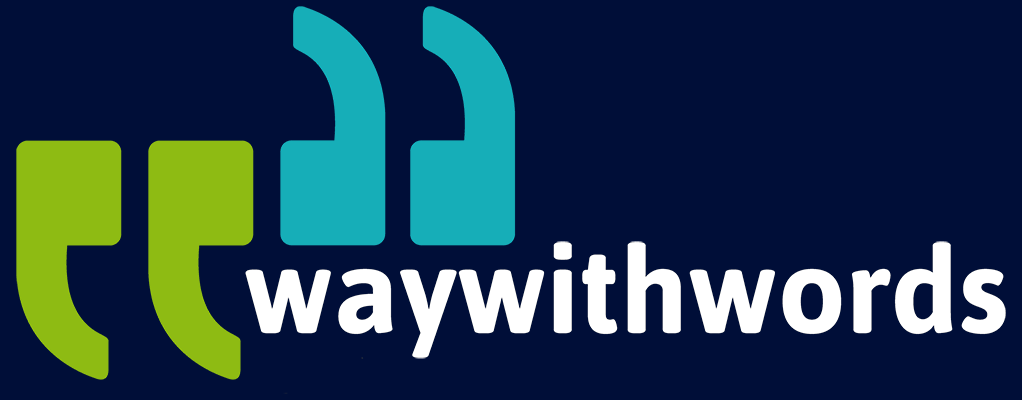Why is Confidentiality Critical in Transcription Services?
How to Evaluate Whether a Transcription Service can Handle Sensitive Materials
Confidentiality isn’t simply a procedural obligation for transcription services—it’s the foundation of client trust and the bedrock of ethical practice. Every day, transcription providers handle sensitive audio recordings spanning legal testimonies, medical consultations, strategic business meetings, private HR discussions, a variety of video transcriptions with timestamps, and confidential research interviews. Once recorded, this information must be protected throughout the transcription process and beyond.
Without strict transcription confidentiality, organisations may face damaging consequences: regulatory violations, lawsuits, operational disruptions, and long-term reputational harm. In regulated fields such as law, medicine, finance, and human resources, a single breach could put lives at risk, undermine cases, or cost millions. Even in non-regulated sectors, breaches can erode trust, stall progress, and reduce client retention.
This extended short guide explores in detail why confidentiality is essential in transcription services. It addresses common concerns raised by professionals working across various industries, especially those where trust, legality, and discretion are non-negotiable.
- How do transcription providers ensure that our files are kept confidential and protected from unauthorised access?
- What safeguards exist to prevent or respond to a data breach involving transcription files?
- Are transcription companies legally obligated to protect confidential information, and how do they demonstrate compliance?
How do I evaluate whether a transcription service is equipped to handle sensitive materials securely?
We’ll explore these and more, offering insights into the operational, ethical, and legal pillars of secure transcription.
Confidentiality in Transcription
1. Legal Transcription: Managing Privileged Information
Legal transcription involves sensitive documents that must adhere to strict confidentiality standards. These include client-attorney interviews, litigation preparation, court proceedings, and arbitration hearings. In many jurisdictions, this content is protected under attorney-client privilege and must not be disclosed to third parties.
Breaches can result in:
- Legal strategies being disclosed to opposing counsel.
- Admissibility of evidence being questioned or nullified.
- Loss of professional credibility and client trust.
- Regulatory penalties for failure to maintain client confidentiality.
The legal sector places enormous emphasis on confidentiality. Transcription providers that fail to maintain such standards may be disqualified from working with law firms or involved in ongoing investigations.
In the UK, transcription services handling legal work must comply with the Solicitors Regulation Authority (SRA) Code of Conduct, the GDPR, and the Data Protection Act 2018. Providers must implement rigorous workflows that limit access, prevent leaks, and maintain verifiable audit trails.
Key Points:
- Legal audio contains classified information under multiple statutes.
- A breach could directly influence the outcome of a legal matter.
- Only experienced transcriptionists with legal data training should handle these files.
- NDAs, access logs, and encrypted transfers are minimum standards.
2. Medical Transcription: Upholding Patient Confidentiality
Medical transcription entails processing healthcare records, physician dictations, and diagnostic documentation. These often reveal deeply personal patient histories, including psychiatric evaluations, chronic illness management, surgical notes, and family medical history.
Such data is considered highly sensitive under regulations like:
- The UK GDPR and the NHS Confidentiality Code of Practice.
- The US HIPAA law, which enforces strict patient data rules.
Consequences of a medical data leak include:
- Violations of patient-doctor confidentiality.
- Insurance fraud or medical identity theft.
- Reputational damage for both healthcare providers and transcription services.
- Potential harm to patient care and safety.
Transcription providers must ensure:
- Encrypted storage and transfer.
- Strict access permissions.
- Data retention and deletion protocols.
- Emergency incident response plans.
Key Points:
- Medical information is legally defined as sensitive personal data.
- Data processing agreements (DPAs) must exist between providers and transcription services.
- Transcriptionists should undergo continuous training on healthcare privacy.
- Breaches may be subject to severe fines, criminal investigations, and sanctions.
3. Business Transcription: Protecting Commercial Intelligence
Business transcription encompasses confidential meetings, annual reports, HR proceedings, strategy sessions, merger discussions, investor presentations, and product launch briefings. These discussions frequently involve sensitive internal insights, commercial forecasts, and financial planning.
Potential risks of exposure include:
- Leaks of non-public financial results, affecting stock performance.
- Competitors gaining intelligence on corporate strategies.
- Loss of stakeholder confidence and operational disruptions.
- Employees losing trust in leadership due to leaked HR documentation.
Business confidentiality agreements should be standard practice between companies and their transcription partners. These agreements, combined with digital protections such as file encryption, restricted administrative access, and tiered access controls, are essential.
Key Points:
- Strategic business data can influence shareholder confidence.
- Transcription partners should be certified in data protection protocols.
- Internal policies must govern who can access transcripts post-completion.
- Backups and archives must also be encrypted and monitored.
Loss of confidentiality can also invite regulatory investigations in industries such as finance and telecommunications.

4. The Financial and Reputational Cost of Data Breaches
The financial toll of a data breach extends well beyond the initial fix. According to the IBM 2023 Cost of a Data Breach report, the average incident cost stood at approximately £3.6 million. For transcription providers, this includes technical forensics, legal advice, insurance, lost contracts, and damaged relationships.
Reputational damage is harder to measure but often longer lasting. Once a breach becomes public, clients may avoid that service altogether. Competitors can capitalise on the fallout, and affected industries may increase scrutiny.
Public backlash, media coverage, and damage to brand reputation may outweigh the financial consequences in the long run. In many industries, clients are highly cautious about how their data is processed and stored.
Real-world examples include healthcare facilities penalised under HIPAA for failing to encrypt files shared with transcription providers, and legal firms facing fines for storing transcripts without appropriate consent documentation.
Key Points:
- Legal and operational fallout is only part of the damage.
- Public perception and trust may take years to rebuild.
- Breach insurance does not erase reputational harm.
- Preventative investments are significantly more cost-effective.
- Security resilience builds brand equity.
5. Legal Responsibilities and Data Compliance
Transcription services are classified as data processors under GDPR and similar legislation. Their clients – often data controllers – are responsible for ensuring that only compliant vendors are selected.
Relevant laws include:
- GDPR (UK and EU): Requires data minimisation, consent, transparency, and breach reporting.
- HIPAA (USA): Applies to healthcare providers and their vendors.
- POPIA (South Africa): Governs the collection, storage, and sharing of personal information.
These regulations place obligations on transcription services to:
- Document all data handling procedures.
- Provide clients with DPAs.
- Inform clients immediately in case of any breach.
Fines and penalties vary, but negligence can cost millions. Transcription companies must conduct regular audits, document their data flows, and be prepared to demonstrate their compliance history.
Key Points:
- Ignorance of the law is no excuse in regulated sectors.
- Data Processing Agreements should be part of every client contract.
- All third-party platforms used must be compliant.
- Breach notification obligations have strict time limits.
- Compliance is an ongoing process, not a one-time certification.
6. Implementing Best Practice Security Measures
Robust digital security is fundamental to maintaining transcription confidentiality. This includes:
- End-to-end encryption during both transfer and storage.
- Mandatory multi-factor authentication.
- Logging access to files and creating audit trails.
- Timely file deletion schedules to minimise risk exposure.
- User-level access restrictions to prevent data oversharing.
Providers should undergo penetration testing by third-party security firms and ensure software and cloud platforms are patched and monitored.
Best practice also includes regularly updating protocols to adapt to emerging threats, phishing trends, or newly discovered software vulnerabilities.
Key Points:
- Use SFTP or dedicated secure portals, never general email.
- Temporary links with automatic expiry reduce long-term risks.
- Staff should complete training on phishing, device security, and secure browsing.
- Strong IT governance reduces risk vectors across all endpoints.
- Proactive security updates demonstrate a culture of care.
7. The Challenges of Remote Transcription Work
With the global shift towards hybrid and remote work models, transcription companies often operate with distributed teams. While beneficial for scalability, this setup introduces additional vulnerabilities:
Risks include:
- Use of outdated or insecure personal devices.
- Lack of oversight over file sharing habits.
- Poorly protected Wi-Fi networks.
- Personal assistants or housemates having visual access to confidential data.
Solutions involve enforcing device encryption, providing VPNs, limiting access by IP range, and using centralised work platforms.
Key Points:
- A strong remote work policy must accompany any distributed team model.
- Contractors must be held to the same standards as in-house staff.
- Spot audits and log reviews can uncover risky behaviours.
- Physical workspace security also matters.
- Remote collaboration tools must offer enterprise-grade security settings.

8. Automated Transcription: Risks of AI Platforms
Many companies now use AI-powered transcription tools to speed up workflows. However, using such tools without scrutiny can expose sensitive data to unexpected processing environments.
Challenges include:
- Lack of transparency around where and how data is stored.
- Absence of deletion guarantees.
- Unknown human review layers added to machine processing.
- Data being reused for algorithm training without explicit consent.
- Best practice includes using platforms that are GDPR- or HIPAA-compliant and allow users to control data retention. In hybrid models where AI drafts are reviewed by humans, further checks are required.
Key Points:
- AI transcription should be limited to non-sensitive material unless compliance is confirmed.
- Platform terms should be read closely for data usage rights.
- Providers should disclose whether files are used for AI model training.
- Where possible, use self-hosted or closed-loop AI tools.
- Keep a written policy outlining when AI may and may not be used.
9. Transparency Builds Client Trust
Clients increasingly want to know how their data is stored, who handles it, and what happens if things go wrong. Transparency isn’t just ethical—it’s a competitive differentiator.
Transparency practices include:
- Publishing a privacy policy outlining data use, access, and deletion.
- Offering clients detailed confidentiality agreements.
- Sharing information on where and how data is stored.
- Explaining who handles the data and whether third-party services are involved.
- Transcription services that proactively explain their policies often earn stronger client loyalty.
Key Points:
- Being open about security makes clients more confident.
- Transparency can be a selling point in procurement processes.
- Include contact points for questions about privacy.
- Show certification badges and audit results when possible.
- Clear, accessible language helps non-technical clients understand your processes.
10. Hiring and Vetting the Right Transcribers
Confidentiality ultimately relies on people. Even with flawless software and encrypted systems, human error or negligence can lead to data exposure.
Hiring protocols should include:
- Thorough background checks.
- Signed NDAs and codes of conduct.
- Probation periods with supervised work.
- Identity verification and references.
For ongoing assurance, providers should implement:
- Regular refresher training.
- Confidentiality breach reporting mechanisms.
- Disciplinary measures for lapses.
- Positive reinforcement for upholding confidentiality policies.
Key Points:
- Only hire transcriptionists with a proven track record of discretion.
- Create a culture of responsibility and vigilance.
- Reward secure behaviour and provide anonymous reporting tools.
- Train transcriptionists to recognise and report suspicious activity.
Key Tips to Maintain Transcription Confidentiality
- Request written confidentiality guarantees from every provider or subcontractor.
- Use cloud storage with encryption and fine-grained access control.
- Implement file lifecycle policies to ensure documents are deleted after project completion.
- Conduct regular internal and external audits of your transcription workflow.
- Ensure every staff member understands the consequences of a breach, both legally and professionally.
- Always use NDAs tailored to each project scope and jurisdiction.
- Educate clients about their rights and responsibilities when sharing files.
Confidentiality is Not an Add-On—It’s Essential
Confidentiality isn’t optional in transcription—it’s critical. Every client, regardless of sector, shares content that is often sensitive, confidential, or even classified. Transcription providers who take this responsibility seriously distinguish themselves not only through quality of service, but through integrity and accountability.
This guide has explored confidentiality across legal, medical, and business transcription, showing the wide-ranging impacts of data mishandling. It has addressed legal obligations, operational best practices, remote work challenges, and the rise of AI transcription tools.
We’ve also looked at the importance of hiring reliable transcriptionists, building a transparent relationship with clients, and enforcing up-to-date data security protocols that evolve with emerging risks. The overarching message is clear: safeguarding data is not a one-time task—it’s a culture and a continual commitment.
Most importantly, it shows that maintaining confidentiality is about culture as much as it is about compliance. The organisations that build secure processes, invest in training, and communicate transparently will earn client trust—and keep it.
Because once trust is broken, especially in transcription, it’s nearly impossible to restore.
Further Resources
Confidentiality Resource – Wikipedia: Describes the importance of confidentiality across various sectors, including transcription and business operations.
Secure Transcription Resource – Transcription Services. Way With Words employs advanced technology and highly skilled transcribers to overcome common challenges in transcription, ensuring that clients receive accurate and reliable transcripts regardless of the complexity of their audio files.
